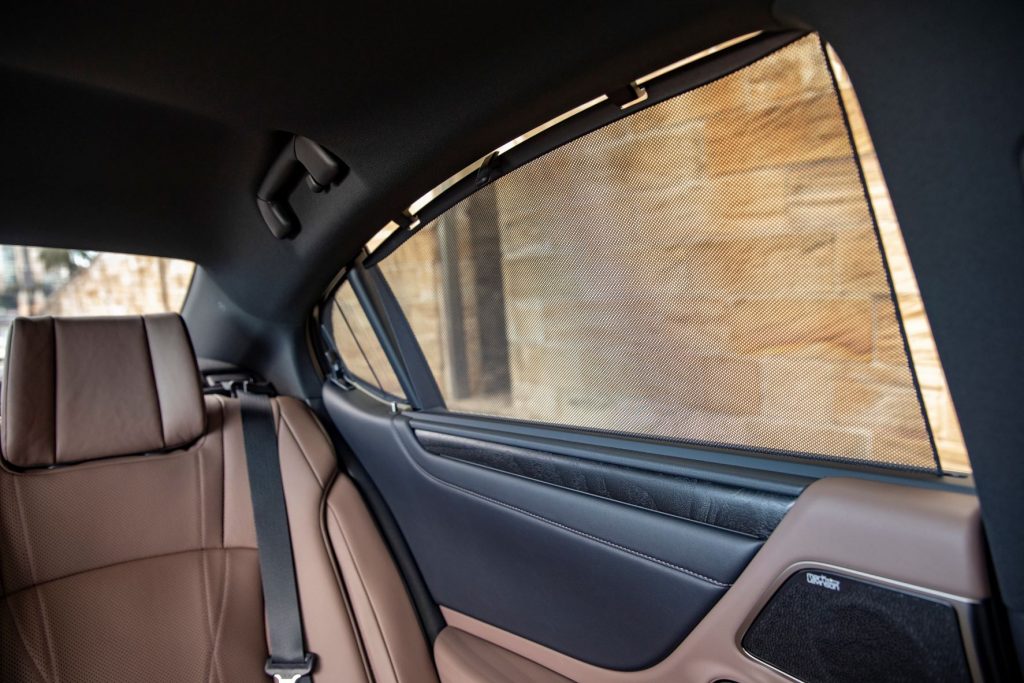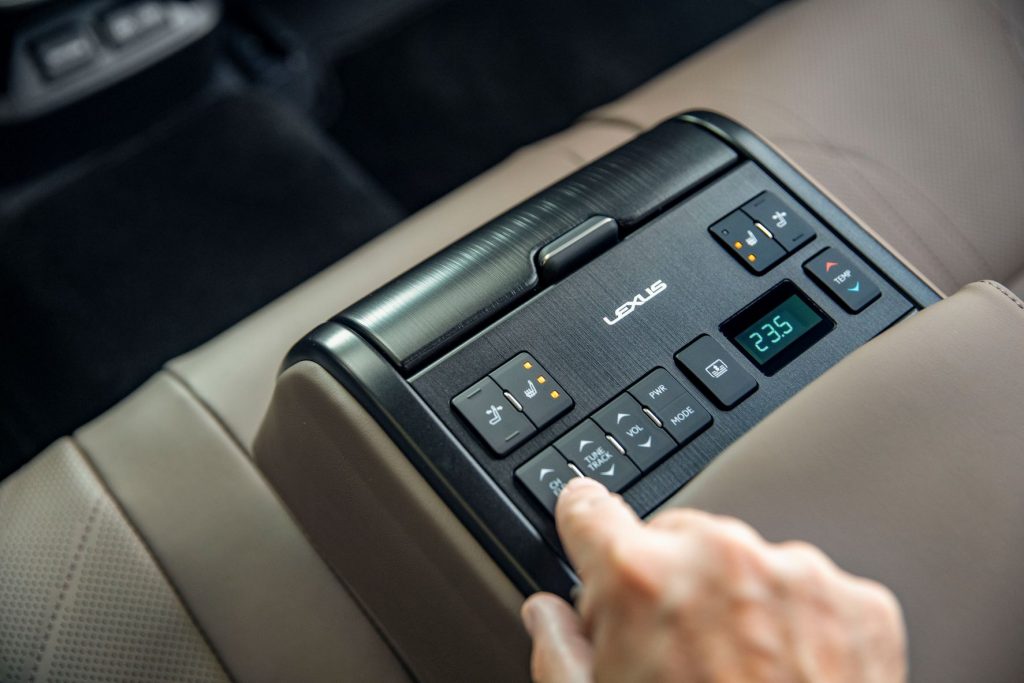Chris Riley tests the 2022 Lexus ES 300h Sports Luxury with pricing, specs, ride and handling, safety, verdict and everything the over-50 driver needs to know.
Summary: The market for mid-size and large sedans has almost disappeared, but for buyers who need a large sedan, the Lexus ES 300h is hard to beat.
2022 Lexus ES300h Sports Luxury
Pricing: $78,180 (plus on road costs).
Warranty: Five-years, unlimited km.
Safety: 5-star ANCAP
Engine: 2.5-litre inline DOHC four-cylinder petrol, plus electric motor
Power: 131kW at 5700rpm plus 88kW (electric motor). Total 160kW
Torque: 202Nm at 3600rpm
Transmission: CVT automatic, front wheel drive
Battery: nickel metal hydride
Body: 4975mm (long); 1865mm (wide); 1445mm (high)
Weight: 1740kg
Towing capacity: not stated
Wheels: 18-inch alloy
Tyres: 235/45R18
Ground clearance: 158mm
Turning circle: 12.6m
Fuel tank capacity: 50 litres
Official consumption: 4.8L/100km (95 RON fuel)
Consumption on test: 4.8L/100 (540km)
seniordriver consumption: not tested
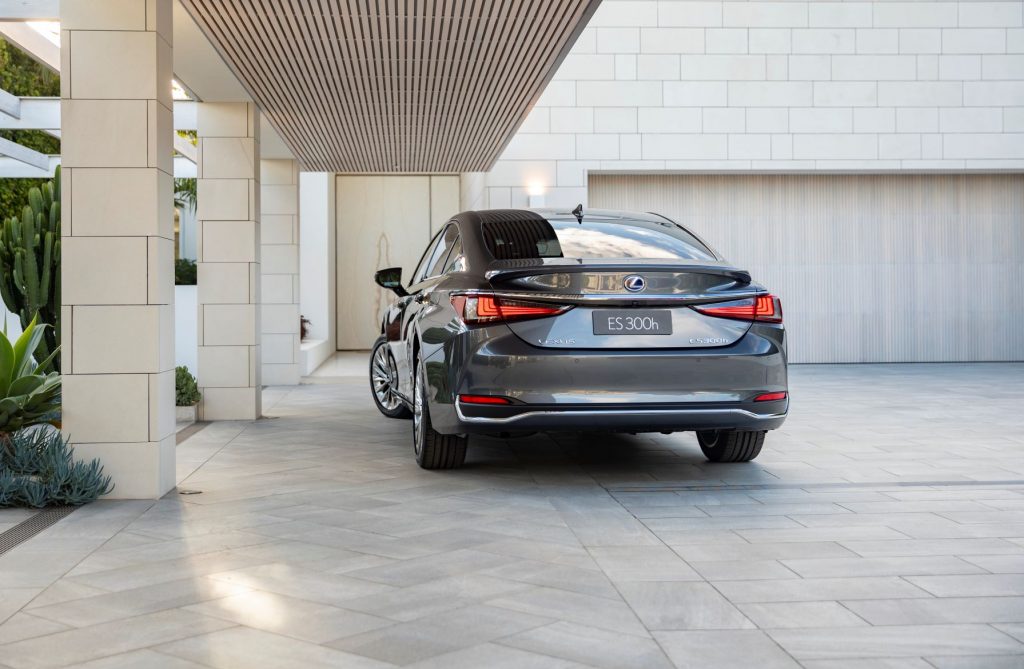
[review]
The ES 300 is one of just two sedans that Lexus continues to sell.
A four-door sedan, it’s based on the same platform as the Toyota Camry, but you’d never know.
This one has a hybrid under the bonnet, in fact the same one as Camry and other Toyotas including, of course, the Prius.
It comes with a string of acronyms, power operated everything and a back seat that would do Emirates first class proud.
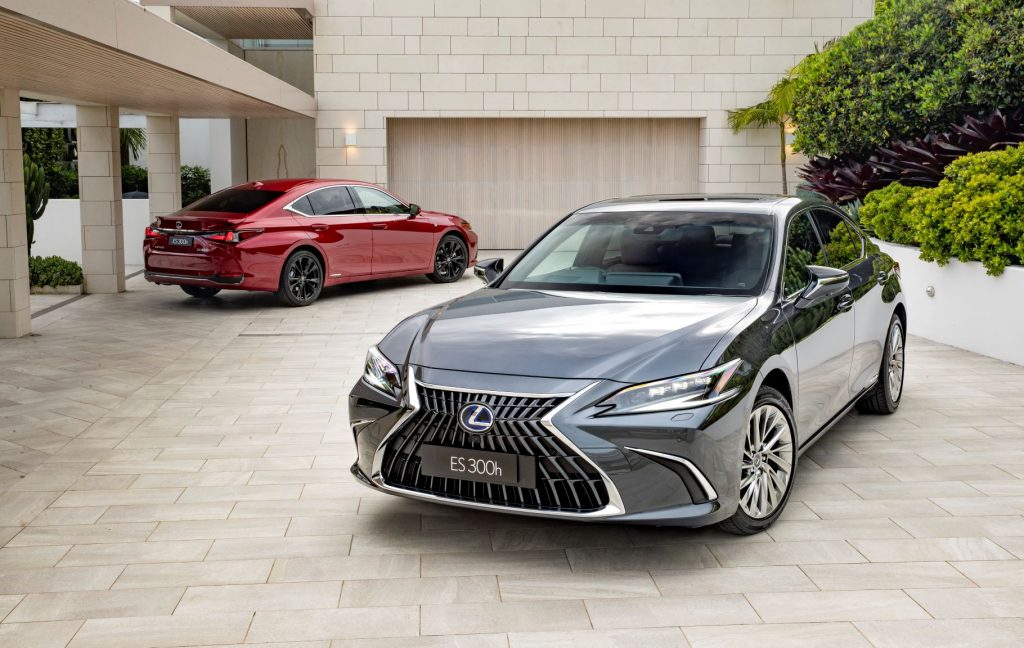
What’s it cost?
Prices start from $61,620 for the ES 250 Luxury (with a standard 2.5-litre engine).
The hybrid gets going at $63,550 for the ES 300h Luxury. That’s just for the basic version.
An enhancement pack takes the figure to $71,810, while our test vehicle, the ES 300h Sports Luxury with the lot, is priced from $78,180 plus on-roads.
Think sporty but with chrome bits. Alternatively, there’s a more focused F Sport version, priced from $72,930 or $76,530 with the enhancement pack.
Lexus expects 85 percent of customers will opt for the hybrid.
You get plenty of kit for the price too, like a large double quarter pounder meal with a couple of hot apple pies – hold the salad.
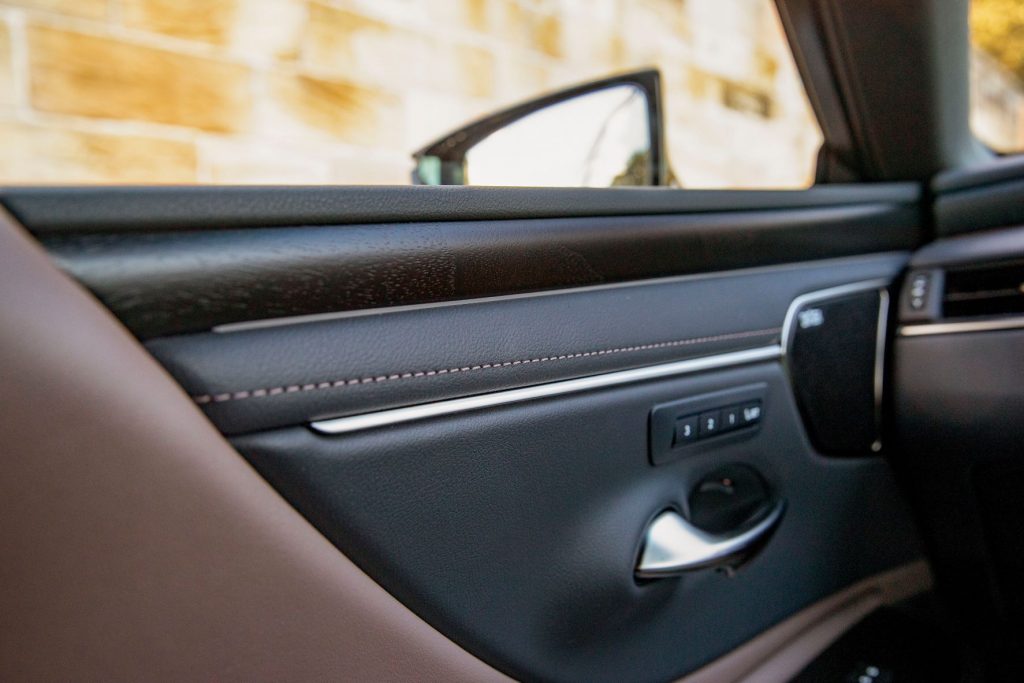
Leather-accented upholstery, bamboo trim inlays, tri-zone climate control with Nanoe X, heated steering wheel, power adjust steering, heated 10-way power adjust front seats, along with power recline and heated rear outboard seats, side door blinds and push-button rear sunshade.
There’s also keyless entry and start, a smallish moonroof, self-dimming interior mirror, LED headlights, auto high-beam, adaptive cruise control, head-up display and road sign recognition and powered bootlid.
The reclining rear seats also feature a centre armrest housing the rear control panel, allowing rear occupants to adjust the rear sunblind, seat heating and angle and audio system.
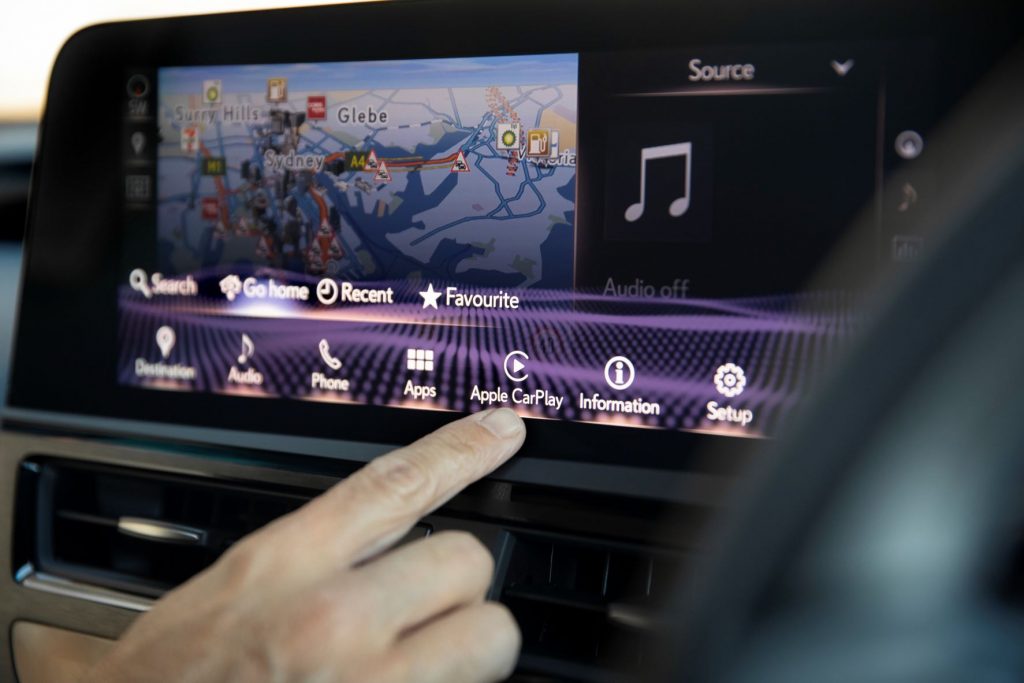
Infotainment consists of a huge 12.3-inch touchscreen, with DAB+ digital radio, satellite navigation with voice control, 17-speaker Mark Levinson audio and Apple CarPlay and Android Auto compatibility – plus twin-front and twin-rear USB-C ports,
Safety is five-star and comprises 10 airbags, pop-up bonnet, auto emergency braking with pedestrian and daytime cyclist detection, intersection assist with turn assist and emergency steering assist.
There’s also lane trace assist, blind-spot monitor, rear cross-traffic alert and parking support brake with parking sensors.
Lexus Connected Services includes SOS call, automatic collision notification and stolen vehicle tracking.
ES is covered by a four-year, unlimited-kilometre warranty, with servicing capped at $495 for the three services at an interval of 12 months or 15,000km.
What’s it go like?
There’s no real mention of it, even in the specs, but the hybrid is actually front-wheel drive.
Rear-wheel drive, a match for Benz and BMW, was a thing in the early days of the brand.
Only the exey flagship LS retains rear-wheel drive. In fact, apart from LS, it’s the only sedan remaining in the line-up as the emphasis switches to SUVs.
The petrol engine in the ES produces 131kW of power at 5700 rpm and 221Nm of torque, from 3600-5200 rpm.
But that’s only half the story, because the electric motor adds another 88kW and 202Nm, although the total is pegged at 160kW (no details of torque).
The self-charging system drives the front wheels through a CVT-style continuously variable transmission, but one that offers various drive modes as well as the ability to change gears sequentially – with six steps or gears to play with.
This model rides on conservatively styled 18-inch alloys with 235/45 Dunlop SP Sport Maxx rubber, and a space saver tucked in the boot.
The dash from 0 to 100km/h takes a claimed 8.9 seconds, while top speed is limited to a measly 180km/h.
Two funny little handlebar-like controls above the instrument cluster provide access to traction off as well as Eco, Normal and Sport modes.
No wonder my fingers couldn’t find a sport button.
The dash itself features a single large analogue-style speedometer that is in reality digital, able to display speed digitally prominently in the centre, where it’s ringed by a tacho.
A smaller screen to the left displays other useful information, including fuel consumption, while two fair dinkum analogue gauges to the right are devoted to fuel and temperature.
It’s all there; it just looks rather plastic.
To the left of the instrument cluster is the enormous 12.3-inch touchscreen, with an analogue clock nestled to the right (a distinguishing feature of the brand).
The cabin of our test vehicle was finished in a combination of tan and grey tones, with comfy perforated leather seats.
Down in the centre console is our old friend the trackpad, useful for just about nothing – certainly on the move.
A wireless mobile phone charge pad hides in the console box.
I remember driving the previous ES at launch in 2013 when the hybrid was introduced.
It was huge inside, with loads of rear legroom and used hardly any fuel, making it perfect for hire car duties.
The current model is even larger, but for some reason doesn’t seem to have the same amount of rear legroom. Maybe it’s an illusion, or maybe they made the boot bigger instead.
Again, it’s all there – it just doesn’t feel as opulent as it once did and the hybrid powertrain and rasp from regenerative braking is not conducive to the library quiet interior for which Lexus is noted.
If active noise cancellation is present, who switched it off?
At the same time, it’s undeniably big, classy and comfortable, and doesn’t use much fuel. You’ve gotta like that.
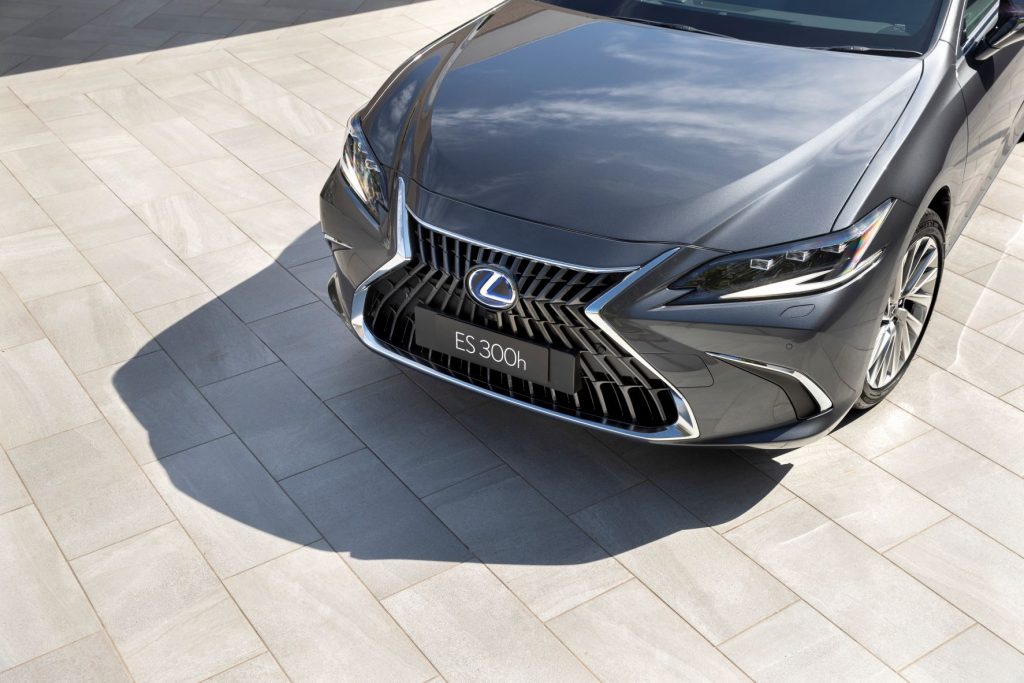
For some reason, Sport Luxury misses out on the adaptive suspension from F Sport, even though it is positioned at the top of the range.
Instead, it gets a single-setting passive system, skewed towards better handling.
Push the start button and the engine doesn’t spring to life. The system becomes ready which means you’re good to go.
Compared to a Euro it’s a disappointing start, but one that is repaid in spades when it is time to fill up. Hybrid rules.
Once underway, performance is adequate, but far from exciting, with the usual noise, vibration and harshness that goes with a hybrid.
It feels quicker off the line than the figures suggest, but you need to stick the boot in when it comes to hills and overtaking, and even then it’s not convincing.
The ride is compliant, with a big car feel most of the time, like Falcons and Commodores of old, but becomes harsh and unforgiving when it encounters potholes and particularly speed humps.
Switched to manual mode and using the paddles to change gear, however, the car emerges from behind the economical, emissions-friendly facade.
It sits flat and corners impeccably, with plenty of grip and no hint of breakaway, no mean feat considering the weight of the battery pack under the rear seat.
On another note, the navigation is slow to respond and locked out once the car is moving, and good luck trying to change the map orientation and keep it there.
Likewise, try cancelling a destination. We couldn’t do it from the screen. It was necessary to use the good for nothing trackpad (oh, it is good for something).
With fuel consumption rated at 4.8L/100km, we were getting 5.2 from the 50 litre tank after more than 540km – and it prefers 95 premium unleaded.
What we like
- Standout looks
- Excellent fuel economy
- Lots of rear legroom
- Huge touchscreen
- Rear air conditioning
What we don’t like
- Lifeless drive feel
- Instrument cluster looks plastic
- Doesn’t feel as luxurious as previous models
- Plunging roofline makes back-seat entry awkward
What over-50s need to know
The ES 300h is another one of those cars that offers plenty of class for a very reasonable outlay.
It’s got oodles of room in the back, a biggish boot and as a hybrid uses very little fuel.
But it does sit unexpectedly low to the ground which could be an issue.
I was getting ready to hate this car.
Then, on the spur of the moment, I decided to go the long way around – to get off the motorway and give it some.
In manual mode, changing gears using the steering wheel paddles, the car emerges from the shadows, sitting flat and very much in control through corners, with nary a hint of breakaway.
Brakes are convincing too.
Gets my vote.
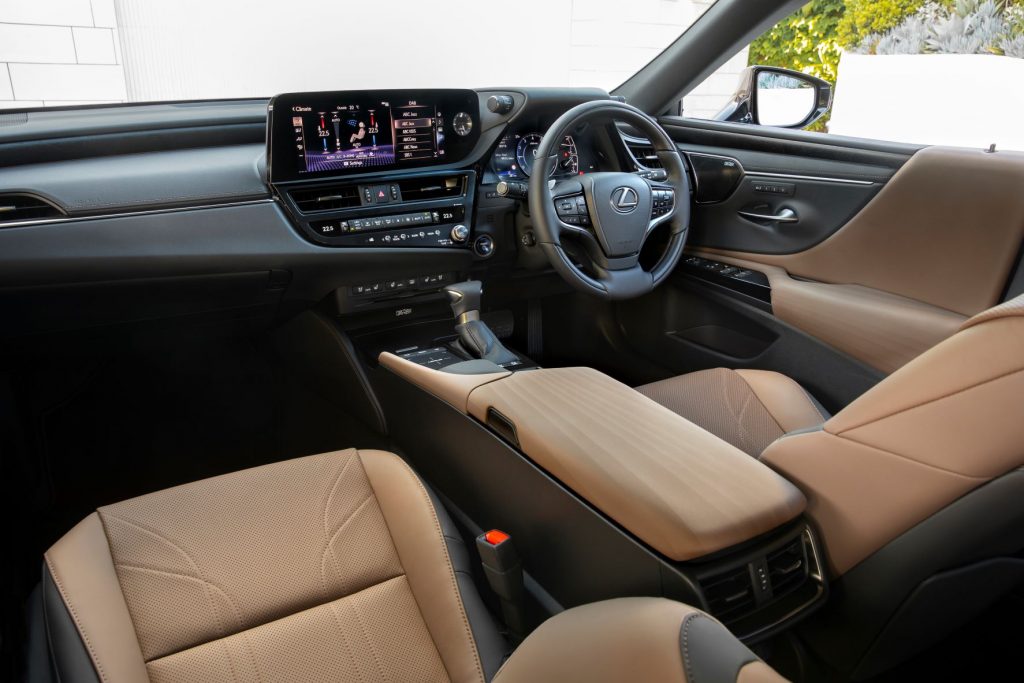
seniordriver comments
The Lexus ES 300h may fill a need for those people still missing the Big Three Aussie cars that disappeared with the Falcon, Commodore and Valiant.
These days, the large saloon category is very much a niche market, a point made abundantly clear by the fact that Lexus only has two sedans in its range.
The ES 300h has all the advantages of the hybrid system employed by Toyota – in other words, you drive it just like your old internal combustion-engined car, and for many, that’s a big part of its appeal. And it explains why Lexus is predicting that 85 percent of buyers will choose the hybrid version.
It took Lexus a fair while to upgrade their warranty, but it’s now five years (it must have been embarrassing – and hard for a salesperson to explain – that the Toyota Camry, on the same platform, was warranted for five years while the more expensive Lexus could only manage a four-year warranty).
Some people will lament that Lexus, which once stuck with rear-wheel drive, is now front-wheel drive, but very few people will notice. Or care. Most will be more disappointed that the Lexus isn’t as obviously opulent as it once was.
Chris calls the limited top speed of 180km/h “measly”, but that’s well above the maximum speed you can travel at anywhere in Australia. It shouldn’t be an issue for most buyers.
For many over-50s, the Lexus will meet every need they can think of, at a quite reasonable cost. With one notable exception: we looked everywhere we could think of and couldn’t confirm if the Lexus ES 300h is rated to tow. The Lexus NX 300h (which is also a hybrid) and the Toyota RAV4 Hybrid which uses the same engine/electric motor combination, are able to tow up to 1500kg (braked) and we’d assume the Lexus ES 300h would be similarly rated. If towing is on your must-have list, check before you buy.

